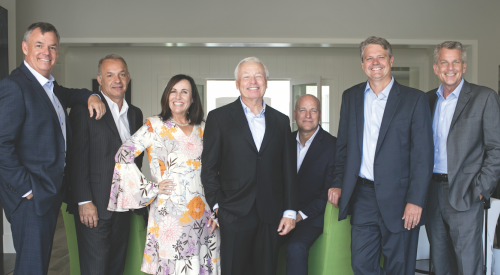|
"We had learned at a board meeting at the end of September 2000 that the owners were putting the company up for sale," Webb says. "They didn't believe we could grow fast enough to go public, but we were doing well enough to be marketable."
Credit Suisse/First Boston showed up the next week to begin preparing the prospectus. Webb and CFO Wayne Stelmar worked on it until just before Thanksgiving. "Then we brought our senior people to a meeting in Las Vegas and told them we could all be SOL soon," Webb recalls. "By late in the year, we had four of the big public builders bidding for us.
"We understood the owners' position, but we were just on the cusp of something great. We'd pulled three disparate cultures into one, and we were starting to really see returns on the bottom line."
As word spread that WL was on the block, lenders and interested investors began to ask Webb and Stelmar if they planned to start their own company or bid for WL. "Ray Watt [the 'W' in WL] said he'd invest," Stelmar says, "and he encouraged us to take a shot at raising the rest."
Goldman Sachs Whitehall led the negotiating process. "They said, 'Go ahead, you don't have much money or credibility, but put in your bid,'" Webb says with a laugh. "From the time we bid in February, we were excluded from all information. Over the next eight weeks, I guess it turned out that all four of the other bidders had issues about something. I think mold and the liability crisis in California worried a lot of the lawyers. They didn't want to accept liability on the houses we'd built. That didn't bother us. We knew our houses were golden, and we had insurance."
All spring, Webb preached patience. "We paid bonuses in March. That's when I thought we might lose our best people," he says. "But not one person left. We were pushing Goldman, but they had no urgency at all."
Stelmar put together the deal's intricate financing. "We got some significant support from investors over the winter and early spring," Stelmar says. "We had to put together carry-back financing and bridge financing on top of that. We leveraged $135 million to do the deal, and we had three years to restructure that acquisition debt and equity."
Webb was convinced they'd make it even if the company underperformed. "The longer it went, I guess, the better our offer looked," he says. "Finally, we got it." But the new company still had to jettison operations in Las Vegas, Utah and Washington, D.C. "Those were good markets for us," Stelmar says, "but we needed the cash to make our deal work."
Today, five senior managers own JLH, along with Watt and a passel of nonvoting private financial partners investing in a share of the profits. "Now," Webb says, "we want to take 5% of the stock and offer that stake to our senior managers in all of our divisions."












